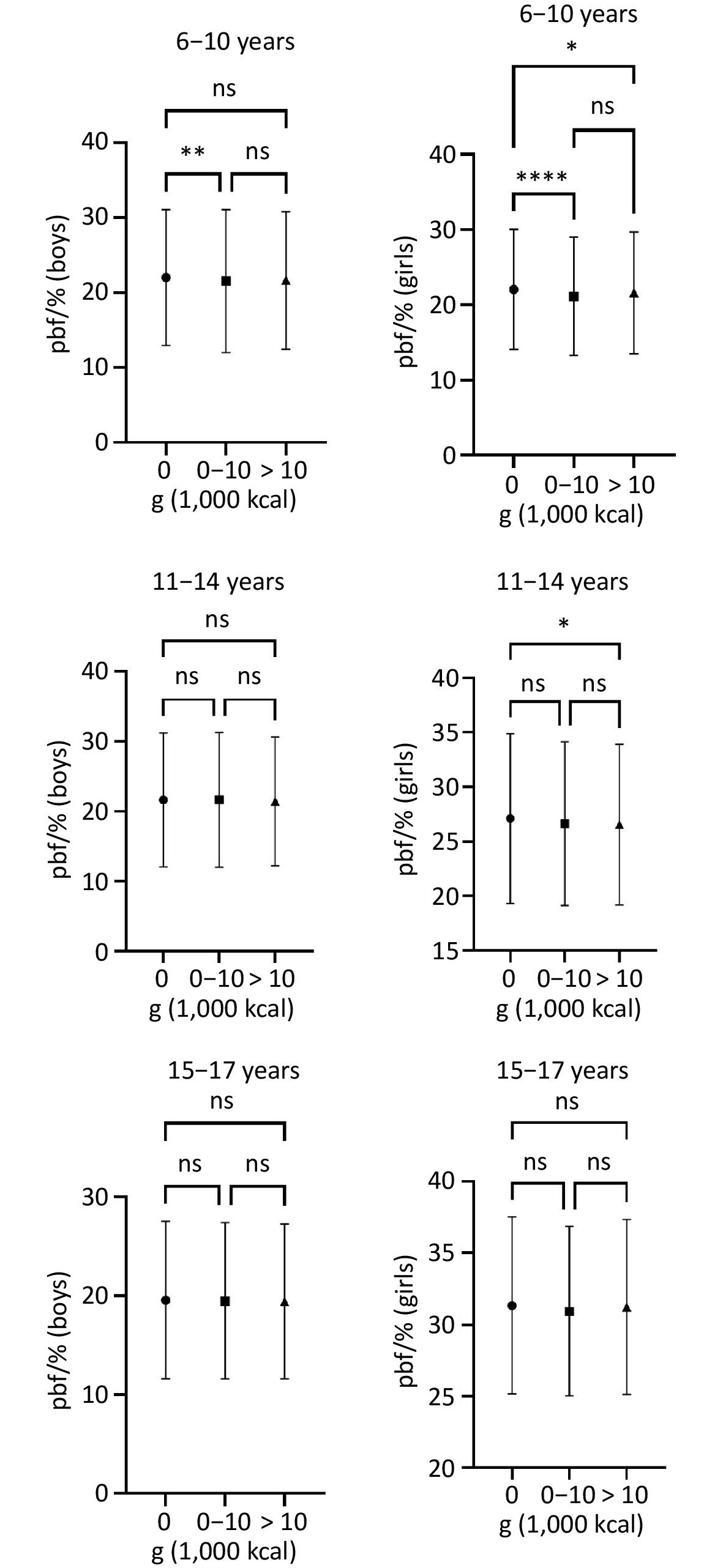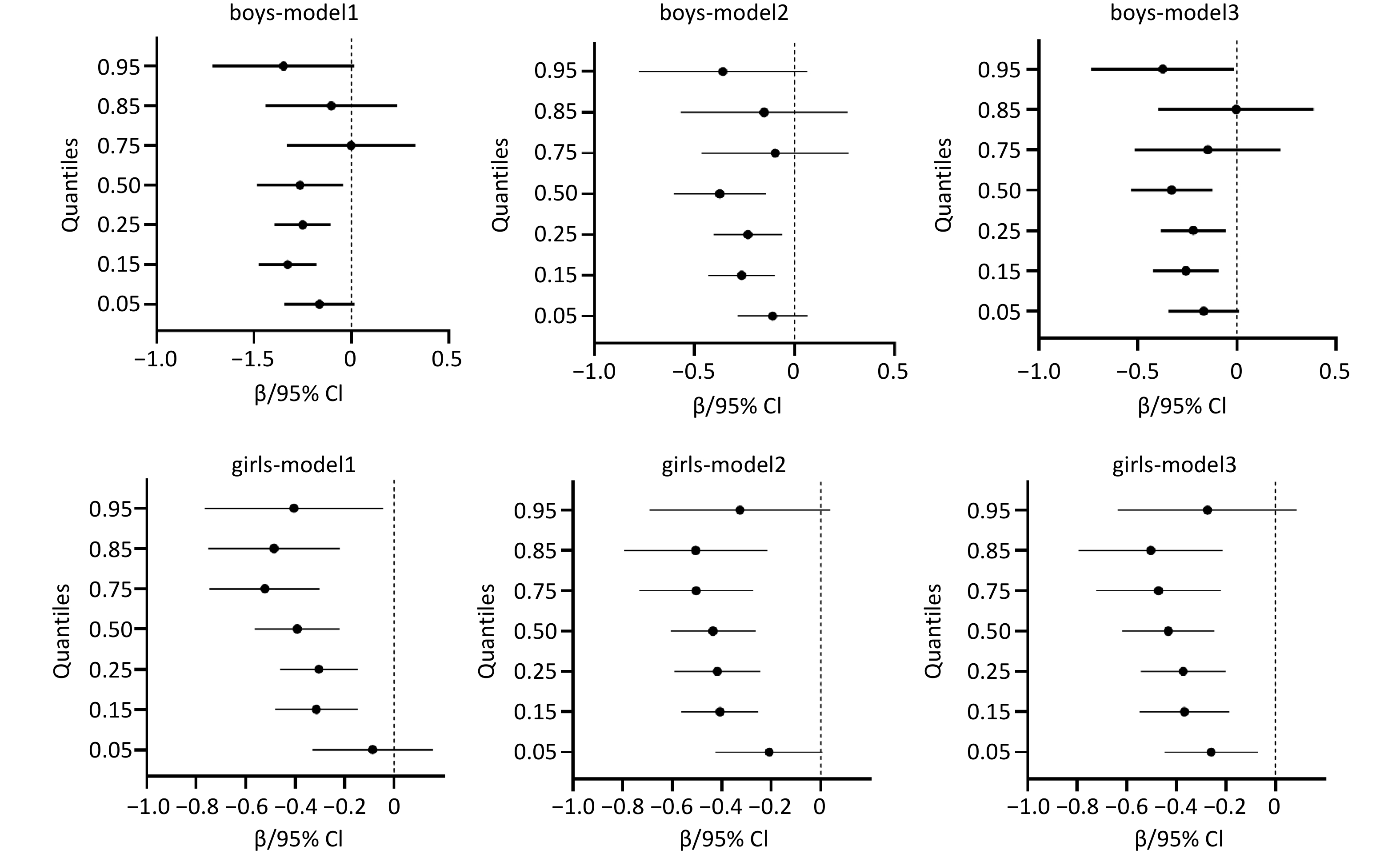-
Childhood obesity has emerged as a significant global public health challenge in recent decades, with its worldwide prevalence escalating at an alarming rate. In 2022, the World Health Organization (WHO) reported that more than 390 million children and adolescents aged 5–19 years are overweight and obese worldwide[1]. In China, the prevalence of overweight and obesity is increasing in both urban and rural areas[2]. According to reports, by 2020, the prevalence of overweight and obesity among children and adolescents aged 5–19 years will exceed 19.0%[3], which is much higher than the 10.2% reported in 2012. Emerging evidence shows that obesity in children and adolescents is positively correlated with adult weight gain and increases the risk of premature all-cause mortality. It will also bring a heavy economic burden to individuals, families, and society[4,5].
The prominent manifestation of overweight and obesity in children is an excessive increase in adipose tissue in the body. Body fat in children and adolescents is influenced by a variety of factors, not only related to age and sex, but also closely related to daily diet, physical activity, and other lifestyle factors[6,7]. Diet is a modifiable factor that contributes to body fat[8]. Coarse cereals were rich in several vitamins, minerals, dietary fibers, and phytochemicals, which were believed to have health-promoting effects[9,10]. Several randomized controlled trials in adults in the United States[11] and Denmark[12,13] have indicated that increasing the consumption of coarse cereals results in a greater decrease in the body fat percentage (BFP)[10,14]. However, limited studies have been conducted on the association between coarse-grain consumption and body fat composition in children and adolescents. Therefore, this study analyzed the association between coarse cereal consumption and BFP in Chinese children aged 6–17 years to provide practical measures for controlling overweight and obesity in children.
Traditionally, many questions regarding diet and body composition have been evaluated using linear regression-based methods[7,15]. Linear regression can only provide information regarding the central tendency of the data, and its description of the overall distribution is limited. Moreover, this method estimates parameters based on the least-squares method, making it sensitive to outliers[16]. Given that the effect of coarse grain consumption on BFP may differ according to different body fat levels, we employed quantile regression in this study. Unlike linear regression, quantile regression can analyze the relationships between variables at various quantiles, offering a more comprehensive view of data distribution[17]. By minimizing the weighted absolute value errors, it is less affected by outliers, thus providing more robust estimates and accurately reflecting the true relationships in the data[18].
-
Data were obtained from the National Nutrition and Health Systematic Survey and Application for 0–18-year-old children. A total of 66,000 children aged 6-17 years from 28 districts/counties in 14 provinces in seven regions of China were surveyed using a multi-stage stratified random sampling method. Approximately 196 children were enrolled per age cohort, with an equal distribution of males and females (1:1 male-to-female ratio)[19].
This study was approved by the Ethics Committee of the National Institute for Nutrition and Health, Chinese Center for Disease Control and Prevention. Written informed consent was obtained from the guardians of all participants before their enrollment in the study.
-
The consumption status of coarse cereals was obtained using the Food Frequency Questionnaire (FFQ). The questionnaire employed a face-to-face questioning method, asking research participants about the frequency of various food consumption in the past month, as well as the average consumption of various foods at one time. The survey included 72 food items in 12 categories: cereals and potatoes, soybean products, vegetables, fruits, dairy products, livestock and poultry meat, aquatic products, eggs, nuts, beverages, water, and snacks. The consumption frequencies of each food item were categorized as follows: times/day, times/week, times/month, and rarely eaten. The average consumption per serving was recorded in grams of solid food and milliliters of liquid food—coarse cereal consumption by school-aged children, including corn, millet, and miscellaneous beans.
Based on the China food composition tables (standard edition) published in 2018 and 2019[20,21], the energy consumption of each food were calculated and then added up to obtain the daily total energy consumption (kcal/d) of each individual. The adjusted daily consumption of coarse cereals (g/1000kcal) was determined by adjusting the daily consumption of coarse cereals (daily consumption of coarse cereals × 1000/total energy consumption) using the density method[22]. The adjusted consumption of coarse cereals for children was divided into three groups: 0 g/d/1000 kcal, 0–10 g/d/1000 kcal, and > 10 g/d/1000 kcal, concerning the recommended food consumption of the dietary guidelines for school-age children[23].
-
After fasting for 10 h and urination, the children’s fasting weight and body composition were examined using bioelectrical impedance analysis early in the morning. Weight was measured to the nearest 0.1 kg in light indoor clothing. This device features eight tactile electrodes for the hands and feet, utilizing six frequency bands (1, 5, 50, 250, 500, and 1000 kHz) to analyze human body composition via a multiloop method[24]. Indicators such as body free mass, fat-free mass, and BFP.
-
Children’s physical activity was assessed using a Physical Activity Questionnaire. This questionnaire is a 6–17-year-old Chinese Children’s Physical Activity Questionnaire (CCPAQ) established and validated by this project[25]. The questionnaire was effective in distinguishing between types and patterns of physical activity and reliably measured a child’s time spent on physical activity in one week. The survey included measures of physical activity and sedentary behavior times.
Puberty was developed using the Tanner Five staging method[26]. After using pictures and text to explain the five stages of development, the children self-reported. Boys are judged according to their pubic hair and penile development and the time of their first sperm loss, while girls are judged based on the development of breasts, pubic hair, and the time of menarche[27].
Information about the children’s families was obtained using a parental questionnaire. Parents completed the questionnaire at the parent-teacher meeting. The survey included family information, such as the education level of the child’s parents and the total family income for the previous year.
-
The data were cleaned and analyzed using SAS 9.4. Data from 58,101 children who completed the FFQ and body composition measurements were selected as follows: healthy children born locally, aged 6–17 years; residing in the investigation site area for over half a year, and with no relocation plans within the next year. The exclusion Criteria were as follows: 1) Children diagnosed with any acute or chronic disease at a secondary or higher hospital. 2) Children were excluded if their total energy consumption or consumption of grains, potatoes, or vegetables was zero. 3) Children whose consumption of cereals, potatoes, or lean foods fell below the 1st percentile or exceeded the 99th percentile for their respective age groups were excluded from the analysis. 4) Children who did not complete the physical measurements or physical activity questionnaires were also excluded. 5) Children without parental questionnaires were excluded. Finally, 48,305 children aged 6–17 years were included in the analysis. The median (lower quartile, upper quartile), that is, M(P25, P75), was used to describe the daily consumption of coarse cereals and the BFP status of children of different sexes and age groups.
The Wilcoxon rank sum test and Kruskal-Wallis rank sum test were used to compare the differences in BFPs of boys and girls in the different consumption groups of coarse cereals. Quantile regression analysis was used to analyze the relationship between coarse cereal consumption and BFP in children (PROC QUANTREG). The directed acyclic graph is based on previous research on whole grains and body fat and is used to determine the variables needed for adjustment in the quantile regression model[28-30] (Figure 1). These covariates included age, level of pubertal development (breast development in girls, genital development in boys), urban/rural and regional factors, total daily energy consumption, sedentary behavior, time spent on moderate-to-high physical activity, household income, parental literacy among children and adolescents, and other food consumption. Differences were considered statistically significant at P < 0.05.
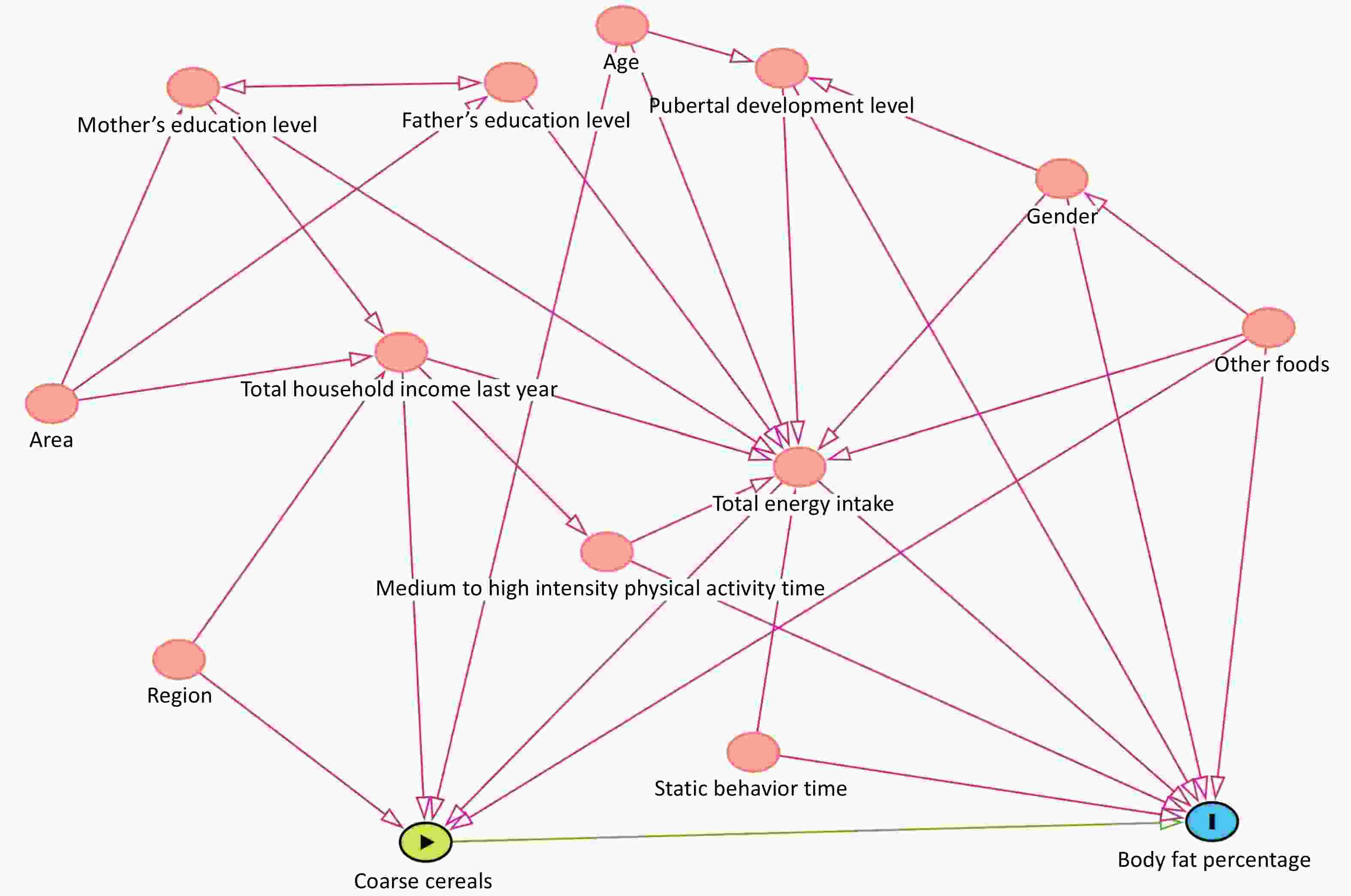
Figure 1. Directed Acyclic Graph. A directed acyclic graph represents the associations among covariates, primary exposure, and outcomes. Pink circles represent ancestors of the exposure and outcome (i.e., confounders), and blue circles represent ancestors of the outcome (i.e., causal determinants of the outcome). Green lines represent causal paths, and pink rose lines represent biasing paths. The minimally sufficient adjustment set represents covariates such that the adjustment for this set of variables minimizes confounding bias when estimating the association between exposure and outcome. The minimally sufficient adjustment set was determined using DAGitty software.
-
As shown in Table 1. A total of 48305 children aged 6–17 years were included in this study, including 24153 (50%) boys and 24152 (50%) girls. The sample sizes for boys and girls in each region of China are listed in Table 1.
Demographic Characteristics Indicators Boys (N, %) Girls (N, %) Total (N) Gender 24153 (50.0) 24152 (50.0) 48305 Age 6–10 9636 (39.9) 9469 (39.2) 19105 11–14 8347 (34.6) 8438 (34.9) 16785 15–17 6170 (25.5) 6245 (25.9) 12415 Area Urban 12410 (51.4) 12486 (51.7) 24896 Rural 11743 (48.6) 11666 (48.3) 23409 Region North China 4164 (17.2) 4116 (17.0) 8280 Northeast China 42839 (17.7) 4190 (17.4) 8473 East China 3874 (16.0) 3936 (16.3) 7810 Central China 3184 (13.2) 3235 (13.4) 6419 South China 2405 (10.0) 2423 (10.0) 4828 Southwest China 3518 (14.6) 3498 (14.5) 7016 Northwest China 2725 (11.3) 2754 (11.4) 5479 Pubertal development stage Tanner Stage I 10033 (48.5) 7140 (34.2) 17173 Tanner Stage Ⅱ 2596 (12.5) 3789 (18.1) 6385 Tanner Stage Ⅲ 3737 (18.1) 5074 (24.3) 8811 Tanner Stage Ⅳ 3489 (16.9) 4049 (19.4) 7538 Tanner Stage Ⅴ 844 (4.1) 832 (4.0) 1676 Medium to high intensity physical activity time (h/w) 1.67 (0.5,4.0) 1.42 (0.4,3.3) - Sedentary behavior time (h/w) 30.00 (24.7,40.7) 32.25 (24.8,41.1) - Total energy consumption (1000kcal/d) 2.09 (2.1,3.1) 1.95 (1.4,2.8) - Father’s education level Junior high school and below 11458 (49.7) 11657 (50.5) 23115 High School and above 11617 (50.3) 11451 (49.6) 23068 Mother’s education level Junior high school and below 11788 (51.3) 12065 (52.3) 23853 High School and above 11180 (48.7) 11023 (47.7) 22203 Total household income last year ≤ 49k 5557 (32.1) 5883 (34.1) 11440 49k–99k 5523 (31.9) 5507 (31.9) 11030 ≥ 100k 6225 (36.0) 5872 (34.0) 12097 Note. The level of pubertal development was determined by the development of the genitalia (penis) in boys and breasts in girls. Gender, region, urban/rural status, pubertal development level, father’s education, mother’s education, and total household income in the past year were categorical variables and expressed as N (%). The duration of moderate-to-vigorous physical activity, duration of sedentary behavior, and total energy consumption were continuous variables and were expressed as M(P25, P75). Table 1. Basic information table of the sample
-
For boys, the median daily consumption of coarse cereals were 6.6 g, 7.1 g or 5.7 g at age group of 6 to 10, 11 to 14, or 15 to 17 years, respectively (P < 0.05). For girls, they were 7.1 g, 8.4 g, or 6.7 g for these age groups. (P < 0.05). For boys, the median BFPs were 19.6%, 19.5%, and 17.5% in the 6–10, 11–14, and 15–17 year age groups, respectively (P < 0.05). The percentages of girls in these age groups were 20.3%, 26.4%, and 31%, respectively. (P < 0.05).
Group
Age (year)Body fat percentage Coarse cereals Consumption M (P25,P75) % M (P25, P75) g M (P25, P75) g/1000kcal Boys Girls Boys Girls Boys Girls 6–10 19.6 (14.8,27.85) 20.3 (15.8,26.2) 6.6 (0.0,25.0) 7.1 (0.0,26.6) * 3.7 (0.0,13.1) 4.2 (0.0,14.3) * 11–14 19.5 (14,28.6) 26.4 (21.3,31.9) 7.1 (0.0,35.7) 8.4 (0.0,35.7) * 3.3 (0.0,13.3) 3.9 (0.0,14.1) * 15–17 17.5 (13.5,24.3) 31 (27,34.9) 5.7 (0.0,30.0) 6.7 (0.0,29.9) * 2.3 (0.0,10.9) 3.2 (0.0,13.0) * Total 19 (14.1,27.1) 25.7 (19.6,31.8) 6.6 (0.0,28.6) 7.1 (0.0,29.6) * 3.2 (0.0,12.5) 3.8 (0.0,13.9) * ² 228.325 5568.843 35.297 24.499 83.760 37.384 P < 0.001 < 0.001 < 0.001 < 0.001 < 0.001 < 0.001 Note. The Kruskal-Wallis test was used to compare the differences in the consumption of coarse cereals among children of different age groups, while the Wilcoxon rank-sum test was used to compare the food consumption of boys and girls in the same age group; * indicates that the differences in the food consumption of boys and girls in the same age group were statistically significant. Table 2. Daily Consumption of coarse cereals and body fat percentage in children aged 6–17 years
-
For boys aged 6–10 years, the BFP was 20.0% for boys consuming coarse cereals at 0 g/d, which was statistically higher than that for boys consuming coarse cereals at 0–10 g/d (19.2%) (P < 0.05) but not statistically different from boys consuming coarse cereals ( > 10 g/d (19.4%) (P > 0.05). For boys aged 11–14 years or 15–17 years, the BFP was not statistically different between the different coarse cereal consumption groups.
For girls aged 6–10 years, the BFP was 20.8% for girls consuming coarse cereals at 0 g/d, which was statistically higher than that for girls consuming coarse cereals at 0–10 g/d (20.0%) and > 10 g/d (20.1%) (P < 0.05). For girls aged 11–14 years, the BFP was 26.7% for girls consuming coarse cereals at 0 g/d, which was statistically higher than that of girls consuming coarse cereals at > 10 g/d (26.2%) (P < 0.05), but not statistically different from girls consuming coarse cereals at 0–10 g/d (26.4%) (P > 0.05). For girls aged 15–17 years, the BFP was not statistically different among the different coarse cereal consumption groups.
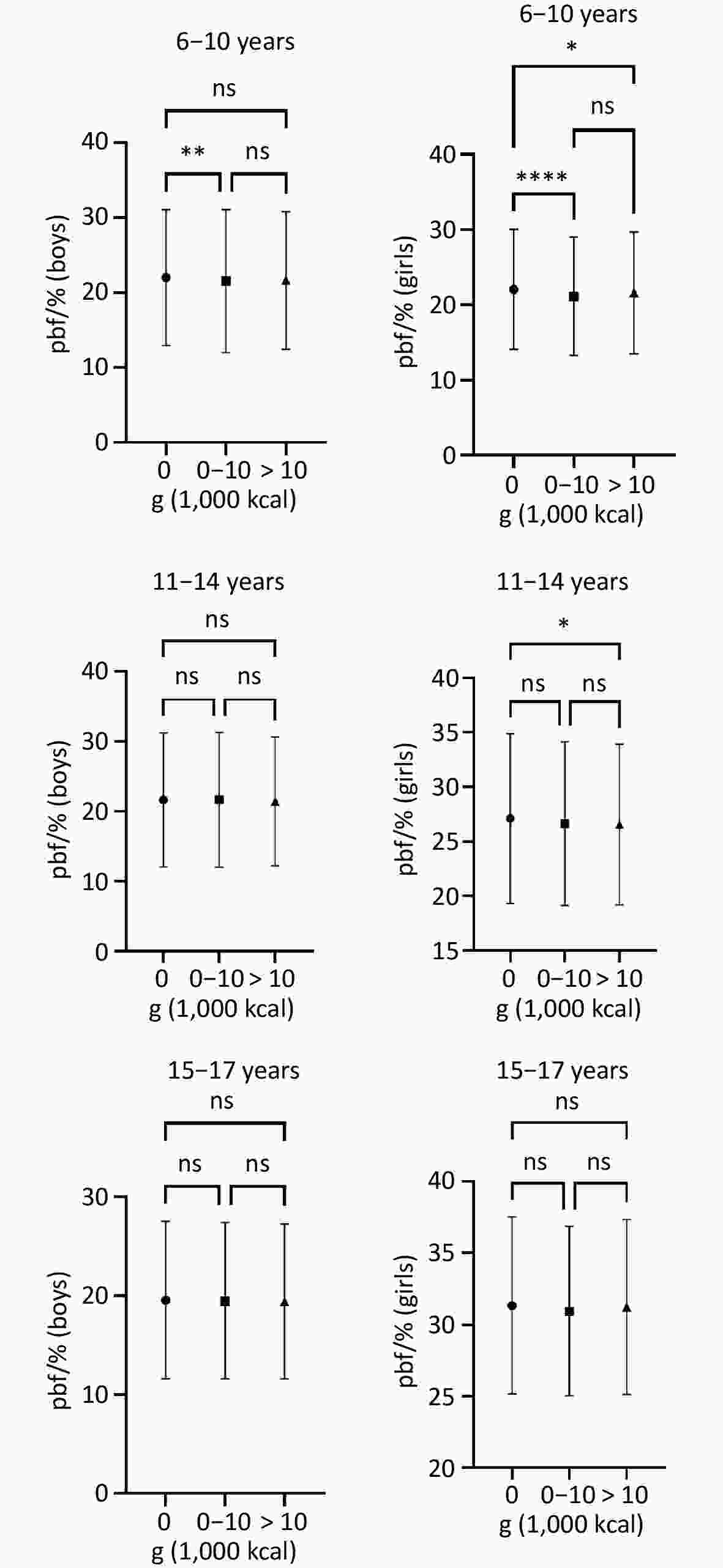
Figure 2. Comparison of body fat percentage of children aged 6–17 years with different coarse cereal consumption groups. The Kruskal-Wallis test was used to compare the differences in body fat percentage (BFP) among children in different food consumption groups, and the dots, squares, and triangles in the graph represent the median values of coarse grain consumption for different age groups. Line segments represent interquartile ranges (IQRs) of PBF for each age group. * The symbol ’*’ represents a statistically significant difference in BFP among children with different coarse grain consumption groups; ’ns’ indicates no statistical difference.
-
As shown in Figure 3. The quantile regression results for boys showed that the adjusted daily consumption of coarse cereals and their BFP were significantly correlated (P < 0.05) in the 0.15, 0.25, and 0.50 quartiles for boys across all models, with regression coefficients of −0.257, −0.221, and−0.330 after adjusting for age, pubertal development status, urban/rural and regional factors, total daily energy consumption, sedentary behavior, time spent on moderate to high physical activity, household income, parental education, and other food consumption.
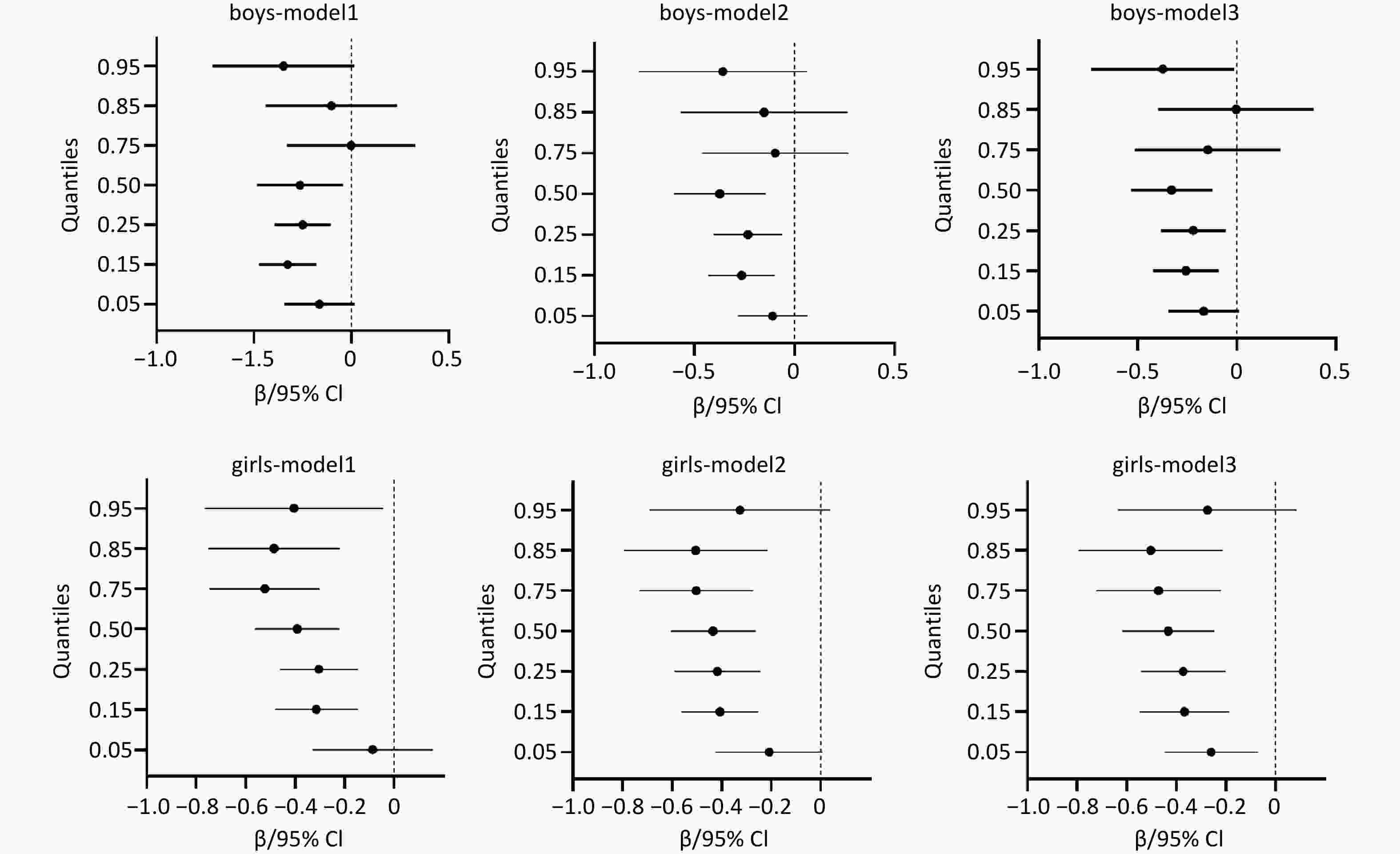
Figure 3. Quantile regression analysis of body fat percentage and coarse cereal consumption in children aged 6–17 years. Model 1: adjusted for age, urban-rural area, and region. Model 2: additionally adjusted for adolescent development status, total daily energy consumption of children and adolescents, sedentary behavior, time spent on moderate-to-high physical activity, household income, and parental literacy. Model 3: additionally adjusted for the consumption of other foods. The point estimates in the graph represent the regression coefficients. The horizontal line segment represents the 95% confidence interval of the regression coefficient. The dashed vertical line at zero indicates the null effect. If the confidence interval of an estimate crosses the zero line, the effect is statistically nonsignificant.
The consumption of coarse cereals for girls and their BFP was significantly correlated (P < 0.05) at the 0.15, 0.25, 0.50, 0.75, and 0.85 quartiles in model 1 and model 2. After adjusting for the consumption of other foods the consumption of coarse cereals for girls and their BFP was significantly correlated (P < 0.05) at the 0.05 0.15, 0.25, 0.50, 0.75, and 0.85 quartiles, with regression coefficients of −0.258, −0.366, −0.372, −0.431, −0.472, and −0.503. Further details can be found in Supplementary Tables S1-14.
-
In China, the traditional classification of grains generally consists of grains such as rice and its products, and wheat products. Our study investigated the consumption of coarse cereals in school-aged children, including corn, millet, and miscellaneous beans, which have nutritional characteristics similar to those of whole cereals[31].
The median consumption of coarse cereals in this study was approximately 5–7 g per day for boys aged 6–17 years and 6–8 g per day for girls, which was significantly lower than the recommended consumptions (30–70 g/d for children aged 6–13 years, 100 g/day for children aged 14–17 years) in the Chinese dietary guidelines for school-age children. Low consumption levels of coarse cereals have also been reported for children of different ages in European countries, such as 9.1 g/d for French children and approximately 13 g/day for UK children/adolescents[32]. In 2012, a national study of 1035 Irish children and adolescents aged 5–17 years using 7-day food records showed an consumptions of 18.5 and 23.2 g/d of coarse cereals, respectively[33]. Although the coarse cereal foods in these studies on children’s coarse cereal consumption varied and the types of coarse grain foods in these studies were different, they all indicated that insufficient consumption of coarse cereals is common internationally[34].
The results of this study showed that the consumption of coarse cereals was related to BFP in children, and that this association increased with an increase in BFP. Similar findings have been reported in studies involving adults. A 2009 cross-sectional study of 434 adults aged 60–80 years in the United States observed that the percentages of body fat and trunk fat in the coarse cereal group were 2.7% and 4% lower than those in the refined grain group, respectively[35]. Although studies examining the relationship between coarse grain consumption and BFP in school-aged children are limited, emerging evidence suggests a negative association between coarse grain consumption and fat mass index (FMI) and BMI in European school-age children[10,36]. A Danish randomized controlled trial (RCT) demonstrated a significant inverse association between oat consumption and FMI in children aged 8–11 years. In 2008, Rena et al.’s study[37]showed that compared with no or rare cereals consumption, daily consumption or more than two daily servings (1 serving of cereals ≈ 40g) of cereals for breakfast was associated with lower BMI levels in boys and girls aged 12–17 years after adjusting for confounding factors such as age, gender, and physical activity status (P < 0.01).
Coarse cereals are rich in B vitamins and minerals, and contain more dietary fiber than refined cereals. Studies have shown that high insulin levels may promote fat accumulation by altering the adipose tissue size and enhancing appetite[38]. The antioxidants and minerals in coarse cereals might help reduce insulin sensitivity, as indicated in several studies. Cereal fibers in coarse cereals could delay gastric emptying and decrease insulin sensitivity[39,40], which might partially explain the association between lower coarse cereals and higher BFP in children. In a randomized controlled clinical trial published in 2001, researchers randomly divided 76 male patients with coronary artery disease into two groups: one group received a daily whole-grain meal, and the other was the control group. After 16 weeks, the results showed that in the whole-grain group, serum concentrations of glucose and insulin decreased by 24% and 14%, respectively[41]. This indicates that the consumption of coarse grains is related to an improvement in insulin resistance, which can reduce the risk of being overweight and obese.
The primary strengths of this study include its large, nationally representative sample size and the utilization of a semi-quantitative FFQ for dietary assessment, which enabled reliable evaluation of long-term coarse cereal consumption patterns among school-age children. Nevertheless, certain limitations must be acknowledged, particularly the cross-sectional design, which precluded the establishment of causal relationships between coarse grain consumption and BFP.
-
In conclusion, this study revealed a significant negative correlation between coarse grain consumption and BFP among girls across both low and high percentiles and among boys in the low percentile range. The analysis further demonstrated that the association between whole grain consumption and body fat reduction became more pronounced with an increase in BFP. These findings suggest that maintaining an appropriate consumption of whole grains may support healthy adipose tissue development in children while potentially mitigating the risk of overweight and obesity. More comprehensive intervention studies should be conducted to investigate the potential of increased coarse cereal consumption to prevent and manage childhood obesity.
Relationship between Coarse Cereal Consumption and Body Fat Percentage among Chinese School-aged Children
doi: 10.3967/bes2025.086
- Received Date: 2025-03-04
- Accepted Date: 2025-06-09
-
Key words:
- Children /
- Coarse cereals /
- Body fat percentage
Abstract:
| Citation: | Tingting Gao, Wei Cao, Titi Yang, Peipei Xu, Juan Xu, Qian Gan, Hongliang Wang, Hui Pan, Yingying Zhao, Kai You, Qingbin Xing, Wenhua Zhao, Zhenyu Yang, Qian Zhang. Relationship between Coarse Cereal Consumption and Body Fat Percentage among Chinese School-aged Children[J]. Biomedical and Environmental Sciences. doi: 10.3967/bes2025.086 |








 Quick Links
Quick Links
 DownLoad:
DownLoad:
